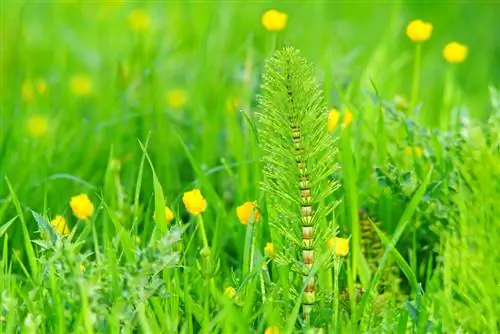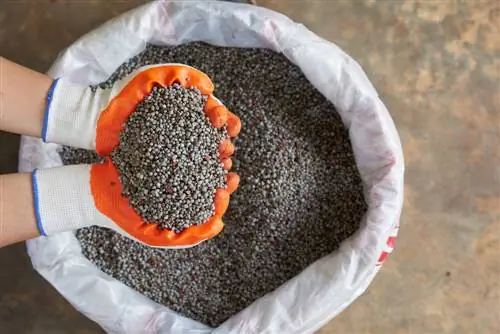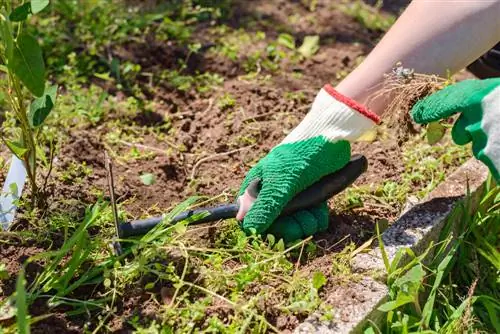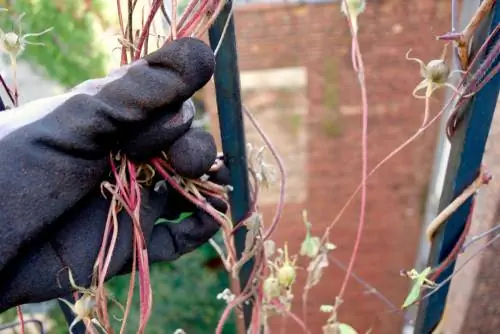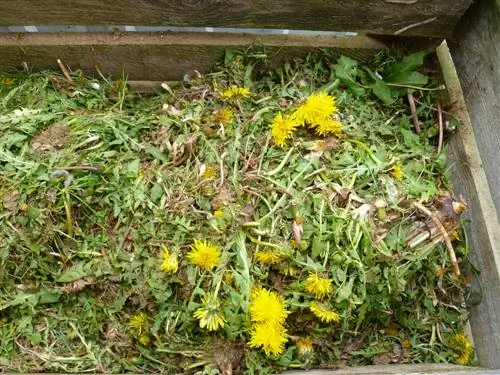- Author admin [email protected].
- Public 2023-12-16 16:46.
- Last modified 2025-01-23 11:21.
The cattail (horsetail, horsetail) is one of the survival artists in the plant kingdom. If the conditions are favorable, the plant spreads rapidly and is difficult to suppress. You can find out how to combat the vigorous weed in this article.
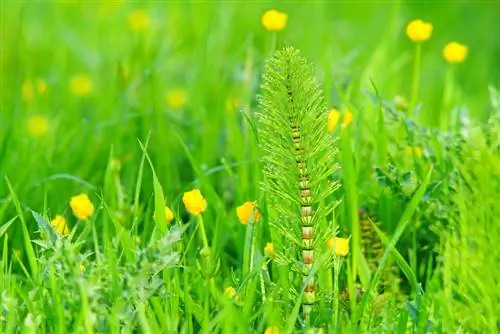
How do I fight cat tail weeds in the garden?
To successfully combat cattail weed (field horsetail), loosen the soil regularly, improve the soil structure with sand and compost, create a lupine bed, plant rhizomatous ornamental plants and, if necessary, use moderate liming.
horsetail: botanical profile
The field horsetail is easy to identify:
- The stem is ribbed and hollow.
- The cross section of the side shoots is star-shaped.
- The branches are arranged in whorls.
- The brownish colored shoots are branchless.
- The number of teeth on the leaf sheaths corresponds to the number of ribs.
- The sprouts do not appear when the cat stalks appear.
- Field horsetail does not have cones. This is an important distinguishing feature from the poisonous swamp horsetail.
Why is Cattail so difficult to fight?
Field horsetail thrives even on soils heavily contaminated with herbicides or s alty. This pioneer plant even grows on very wet, extremely nutrient-poor areas.
The horsetail forms widely branched rhizomes that can reach up to two meters deep into the ground. To permanently get rid of a single plant, you have to dig up about four cubic meters of garden soil and carefully select all parts of the plant.
Deprive the cat's tail of its livelihood
Even herbicides have little effect against this stubborn plant, which is even tolerant to pollutants. Field horsetail is considered an indicator plant for loamy to clayey and very moist soils. You can use this to combat weeds:
- Loose up the compacted soil by digging regularly and improving the soil structure by adding sand and compost.
- Create a bed of lupines in the affected area. These plants help excellently against weeds. With their impressive flower umbels they not only look very appealing. Their roots also loosen the soil and thereby create conditions that the field horsetail does not like.
- Other rhizomatous ornamental plants such as lily of the valley are also helpful in the fight against cattail.
- Regular green manure provides additional soil loosening.
Moderate liming can also be useful
If the soil is too acidic, you can raise the pH value by liming. However, you should definitely carry out a soil analysis in advance and dose the product very precisely so as not to inadvertently damage other plants.
Tip
Like many herbs, cat's tail also has healing active ingredients. It is used as tea or in baths. The silica contained develops its effect in skin-tightening ointments. Therefore, don't just throw away the horsetail that you removed, but instead take advantage of nature's effect. You can find numerous recipes on the Internet and in medicinal herb books (€24.00 on Amazon).

